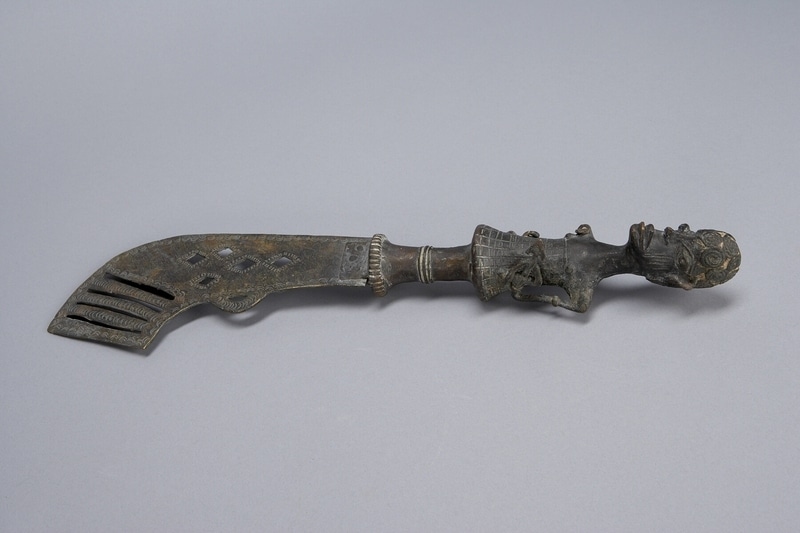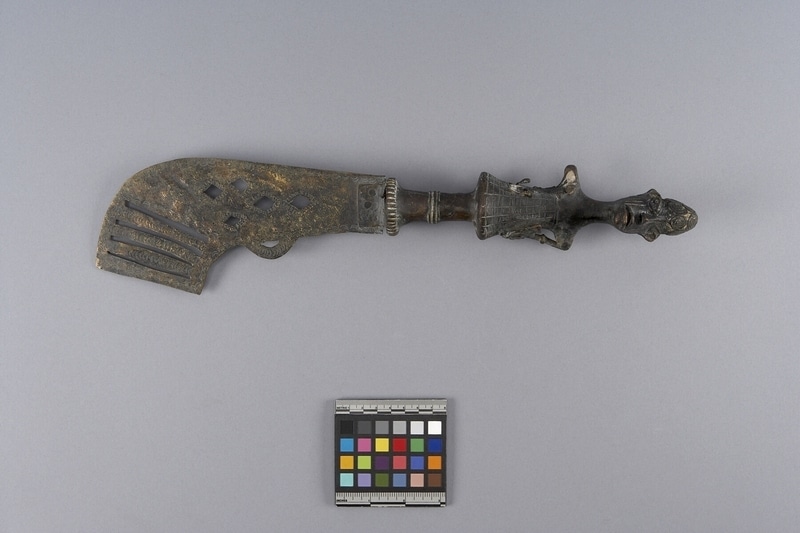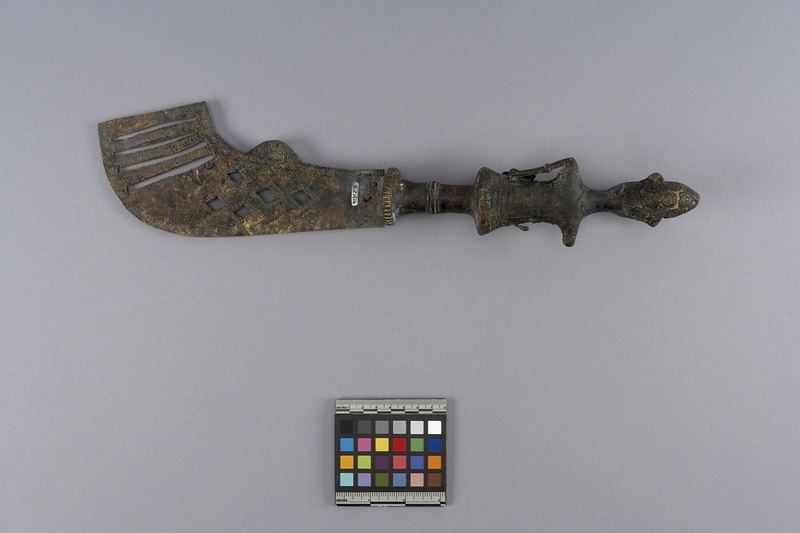Sword Item Number: K2.426 from the MOA: University of British Columbia



Description
A metal blade and handle. The blade curves upward with a flat edge and is pierced with five quadrangles at the middle and four lines parallel to the curved flat edge end of the blade. In the middle of the concave curve of the blade there is a flat arch protrusion which is also pieced in the middle. The design on both sides of the blade consists of grooved crescents patterning around the piercings, and along the edges. The handle consists of a figure with a narrow head that has hair curls, bulging eyes, three diagonal grooved marks on each cheek, and a protruding mouth, and chin. The figure's left arm is holding a weapon that has an arrow point. The body of the figure has a robe which flares out downward and has an grooved pattern of rectangles. There is a small grip for the handle in between the figure and the blade. Cire-perdue method of casting.
History Of Use
These swords, with their distinctive J-shaped blades and anthropomorphic hilts, were usually ceremonial, used in spiritual practices or as a symbol of social status. The shape of the blade is also associated with the spirit Ogun, a spiritual figure associated with metalworking.
Iconographic Meaning
The lines on the female figure's face potentially represent Yoruba ritual scarification.
What
- Name
- Sword
- Identification Number
- K2.426
- Type of Item
- sword
- Material
- bronze metal
- Manufacturing Technique
- cast
- Overall
- height 10.0 cm, width 42.0 cm, depth 6.0 cm
Where
- Holding Institution
- MOA: University of British Columbia
- Made in
- Ghana
Other
- Item Classes
- metalwork
- Condition
- poor